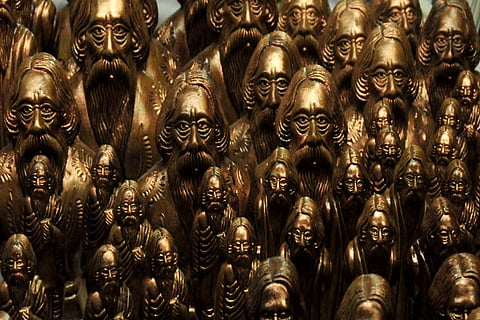Different shapes and sizes of Rabindranath Tagore in Shantiniketan.
Flickr / Rajesh Gupta
Culture
Tasher Desh says ‘bandh bhenge dao’
The recent film rendition of the play Tasher Desh offers a radically different take and is among many attempts to reinterpret Tagoreana.
Is it time people stopped seeing Tasher Desh (The Land of Cards) as a children's play? "Oh yes," chuckles Q. "We've f****d it!"
The pride in the 'achievement' is unmistakable. It is no different from that of a child who has just broken the glass panes in his classroom to protest being thrown out for not getting his pronunciations right. Well, actually, it is almost like that. "I used to be pulled up by teachers and elders for not singing Tagore in their way, the 'right way', which they said was the only way. Even when you mentioned his name it had to be done in a certain way, the whole body language changed," Q says. The rigid Tagoreana of self-appointed Tagore custodians put him off.

